Themed collection Complex Coacervation

Complex coacervation
Guest editors Paul Dubin and Russell J. Stewart introduce this Soft Matter themed collection on complex coacervation.

Soft Matter, 2018,14, 329-330
https://doi.org/10.1039/C7SM90206A
Complex coacervates based on recombinant mussel adhesive proteins: their characterization and applications
Recombinant mussel adhesive protein-based complex coacervates are an effective underwater adhesive and have significant potential in practical applications that require underwater adhesion.
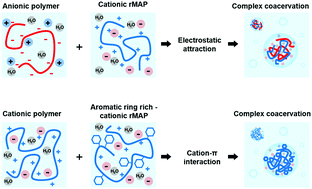
Soft Matter, 2017,13, 7704-7716
https://doi.org/10.1039/C7SM01735A
Mixing ratio dependent complex coacervation versus bicontinuous gelation of pectin with in situ formed zein nanoparticles
Schematic model of the intermolecular binding protocol in a binding pectin–zein interacting solution in the presence of calcium ions.
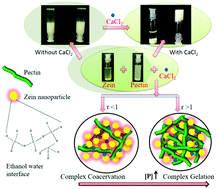
Soft Matter, 2018,14, 6463-6475
https://doi.org/10.1039/C8SM00809D
Structure and rheology of polyelectrolyte complex coacervates
Scattering investigations of the structure and chain conformations, and the rheological properties of polyelectrolyte complexes (PECs) comprising model polyelectrolytes are presented.
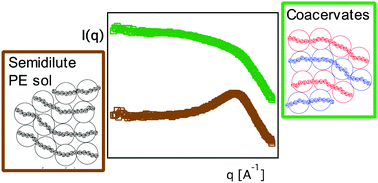
Soft Matter, 2018,14, 2454-2464
https://doi.org/10.1039/C7SM02041D
Dilution induced coacervation in polyelectrolyte–micelle and polyelectrolyte–protein systems
“Self-suppression”, the instability of complex coacervates at high concentration, is well-known for polycation–polyanion systems, but the transient nature of those complexes impedes development of a convincing model.

Soft Matter, 2018,14, 2391-2399
https://doi.org/10.1039/C7SM02293J
Impact of macromolecular crowding on RNA/spermine complex coacervation and oligonucleotide compartmentalization
The impact of macromolecular crowding on both the phase behavior and functional properties of complex coacervate droplets is explored.

Soft Matter, 2018,14, 368-378
https://doi.org/10.1039/C7SM02146A
Reversible generation of coacervate droplets in an enzymatic network
Here we develop ATP-based coacervate droplets as artificial membraneless organelles that can be fully controlled by two cooperating enzymes.
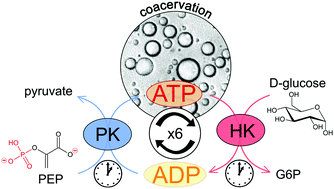
Soft Matter, 2018,14, 361-367
https://doi.org/10.1039/C7SM01897E
Complex coacervation of Mg(II) phospho-polymethacrylate, a synthetic analog of sandcastle worm adhesive phosphoproteins
A phospho-methacrylate analog of sandcastle worm adhesive phosphoproteins forms temperature and pH dependent complex coacervates with Mg(II) ions through outer shell H-bonds and inner shell coordinate bonds in natural environmental conditions of the sandcastle worm.
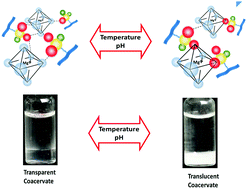
Soft Matter, 2018,14, 379-386
https://doi.org/10.1039/C7SM01654A
A biocompatible betaine-functionalized polycation for coacervation
Betaine, a naturally occurring amino acid, is conjugated onto a polyester backbone, in which the quaternary ammonium group imparts additional functionality to the resulting polycation (B-PED). B-PED demonstrates excellent in vitro and in vivo biocompatibility and is also assessed for its effect on angiogenesis, anti-bacterial activity, and complex coacervation.
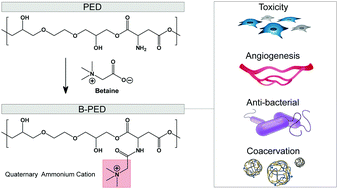
Soft Matter, 2018,14, 387-395
https://doi.org/10.1039/C7SM01763D
Self-coacervation of modular squid beak proteins – a comparative study
The work describes the self-coacervation properties of histidine-rich squid beak proteins, the main biomolecular components of the squid beak.
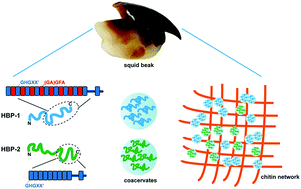
Soft Matter, 2017,13, 7740-7752
https://doi.org/10.1039/C7SM01352C
Rheological characterization of liquid-to-solid transitions in bulk polyelectrolyte complexes
We use linear viscoelasticity measurements to characterize the salt-driven liquid-to-solid transition of ‘saloplastic’ polyelectrolyte complexes.
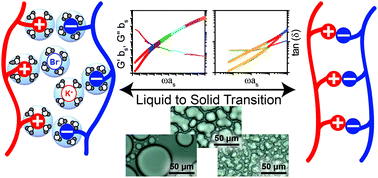
Soft Matter, 2017,13, 7332-7340
https://doi.org/10.1039/C7SM01285C
Transfer matrix theory of polymer complex coacervation
A new theoretical approach to modeling polymeric complex coacervation captures how molecular features affect charge-driven phase separation.
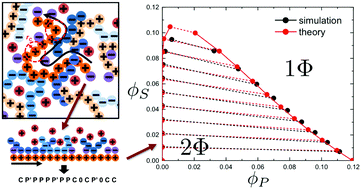
Soft Matter, 2017,13, 7001-7012
https://doi.org/10.1039/C7SM01080J
Obituary for Prof. Paul Dubin

Soft Matter, 2018,14, 8083-8084
https://doi.org/10.1039/C8SM90164C